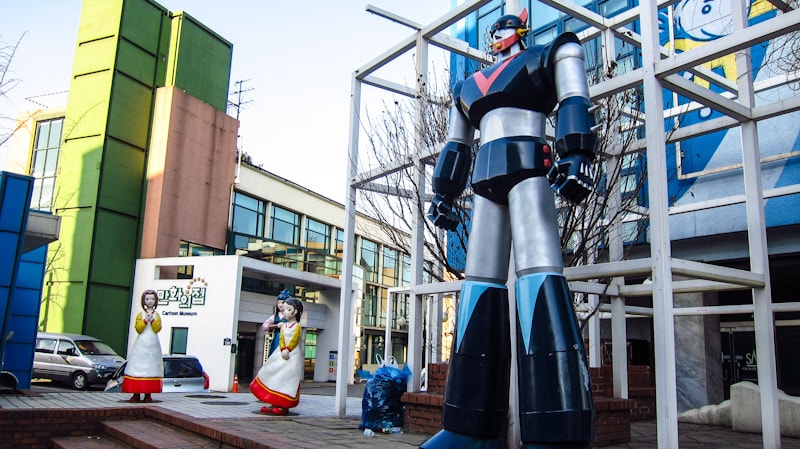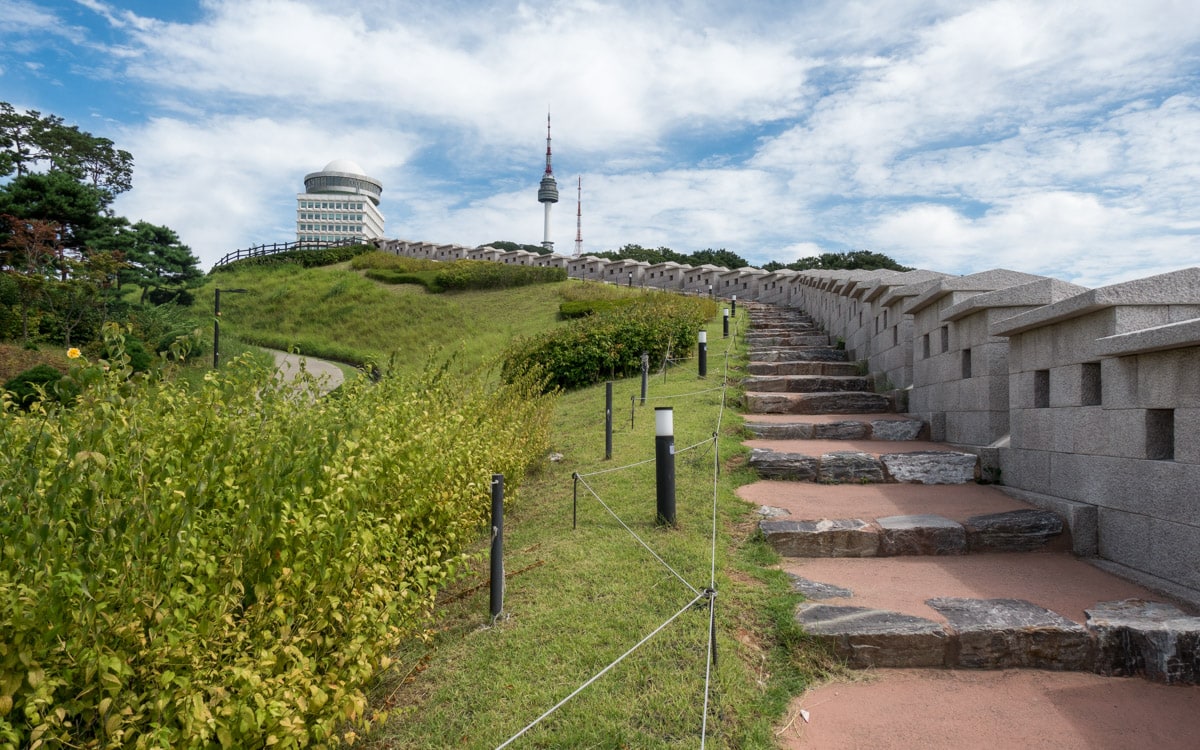
South of Myeong-dong on Mt. Namsan is Namsan Park, popular for hiking trails, tourist attractions, N Seoul Tower, and panoramic views of downtown Seoul. Namsan, meaning “South Mountain”, is the largest park in Seoul attracting over 20,000 people a day who visit here to experience a little slice of nature in the middle of the urban city.
Some of the most spectacular views of downtown Seoul and the surrounding area can be had at the peak of Namsan at 262 meters (860 feet) and better yet, at the top of N Seoul Tower which soars another 237 meters (777 feet) into the sky. .
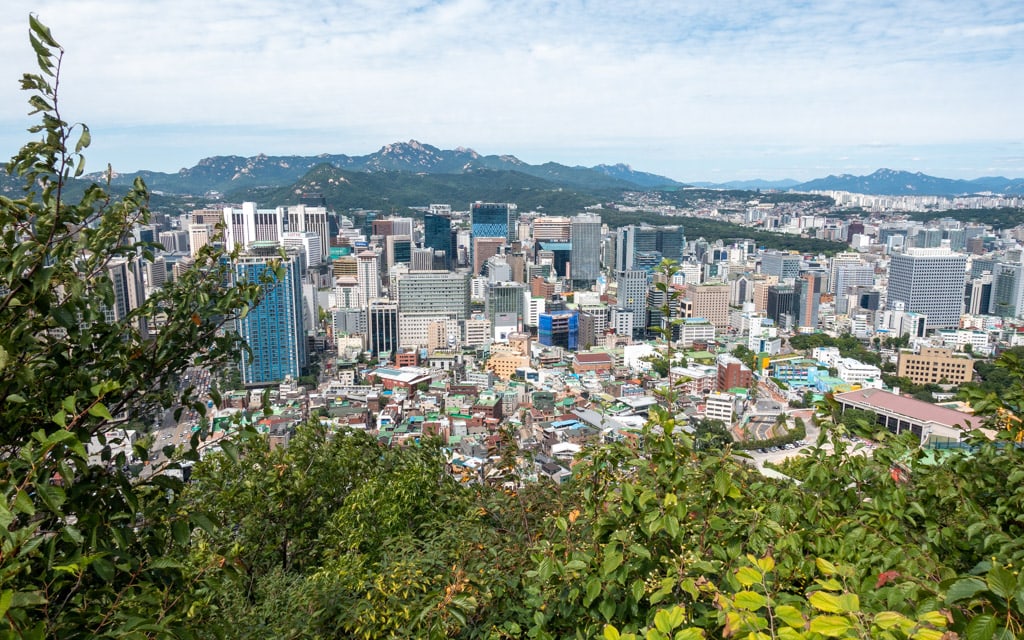
During the rule of Taejo, the first king of the Joseon Dynasty, Namsan was considered a sacred shamanistic site. He ordered the construction of a fortress wall that would protect the city from invaders. The wall that ran through Namsan marked the southern boundary of the city. Some sections of the wall still exist to this day.
In 1925, the Japanese, who occupied Korea at the time, built an important Shinto shrine known as Chosen Jingu at the peak of Namsan as part of their policy of Japanization. The shrine was dedicated Amaterasu, the Japanese goddess of the sun and universe and Emperor Meiji, the 122nd Emperor of Japan who reigned from 1867 to 1912. After the independence of Korea in 1945, the shrine was demolished.
In 1970, the Patriot An Chung-gun Memorial Hall was built on the former site of the Shinto shrine. This memorial hall was built in honor of Ahn, a Korean nationalist and independence activist. who assassinated Ito Hirobumi, the former prime minister of Japan and first Resident-General of Korea at Harbin Railway Station on October 26, 1909. A year later, on March 26, 1910, Ahn was executed for his actions.
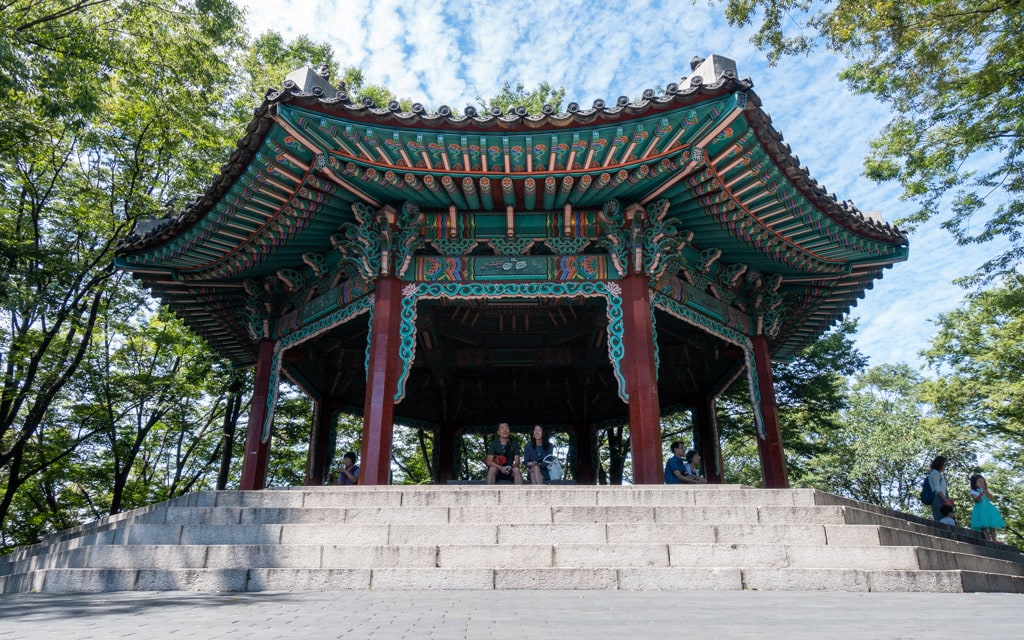
Though most visitors come to Namsan Park to enjoy the views, the nature, or go for a hike, there are also a few interesting sights to see. Other than the N Seoul Tower, there is the Mongmyeoksan Beacon Hill Site (Bongsudae), a set of beacons constructed to warn the city of incoming enemy invasions, an octagonal pavilion known as Palgakjeong, and Locks of Love, a wall of locks that symbolize endless love for those who hang them.
Mongmyeoksan Beacon Hill Site
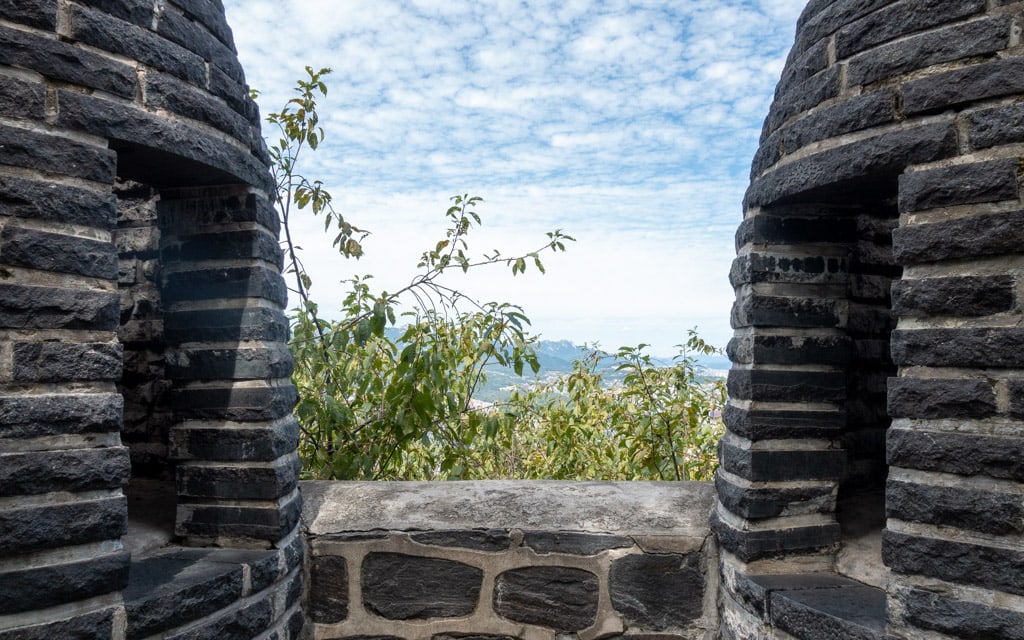
The Mongmyeoksan Beacon Hill Site was constructed to warn the city of incoming enemy invasions and to transmit news of emergencies to the government in Seoul. The name means “beacon hill in the capital.”
During the Joseon Dynasty, a system of beacons were set up which allowed long distance communications. Fires and smoke emitted from the beacons alerted local people in the area and the military that an enemy was approaching.
During the day smoke signals were used to transmit messages. During the night, fire signals were used.
Mongmyeoksan Beacon Hill Site, one of five stations on Namsan, was rebuilt in 1993 using blueprints from geographer and cartographer, Kim Jeong-ho.
Locks of Love

Locks of Love is a collection of locks that have been hung and locked into place on a wall next to N Seoul Tower. They symbolize endless love between those who hang them.
There is a legend that if lovers make a wish at the top of Namsan Mountain, then it will come true.
If you remember, bring your own lock and add it to the collection of thousands of other locks.
Namsan Park Information
Hours
Namsan Park is open 24 hours but attractions in the area have varying operating hours.
Admission
Visiting the area is free including Locks of Love and the Beacon Hill Site.
N Seoul Tower and the Namsan Cable Car both require a paid ticket.
How to Get Here
Namsan Cable Car : Taking the cable car up is the easiest and most convenient way up. From Myeongdong Station go out of exit 3 and continue south on Toegye-ro 18-gil street. When you reach the Pacific Hotel, turn left onto Toegye-ro 20-gil street. When you see the Ministop, turn right onto Toegye-ro 20-na-gil street. At the end of the street is the lower cable car station. The ride takes about three minutes to the top.
Bus : The peak of the mountain can be reached by Yellow Bus. You can board the bus outside Chungmuro Station (Line 3 or 4, Exit 2) or Dongguk University Station (Line 3, Exit 6). The fare is 500 (metro card) or 550 won (cash).
Walking : There is a pedestrian walkway across the street from the Namsan Cable Car lower station. The hike up the stairs to the base of N Seoul Tower takes at least 30 minutes. From the cable car station parking lot (directions above), turn left and walk for about 50 meters. The stairs are located across the street.Map
Additional Resources
Klook
Klook offers discounted tickets and reservations for various attractions and services in Seoul, from theme parks and museums to tours and transportation options.
Viator by TripAdvisor
Viator is a popular online platform that helps travelers book tours, activities, and unique experiences worldwide, including in Seoul. It connects users with a wide selection of options – from sightseeing tours to cultural events and outdoor adventures – all offered by local providers.
Rakuten
Save money while exploring Seoul with Rakuten's cashback program. Book your hotels or other services through Rakuten and enjoy cashback rewards and exclusive deals.
If you sign up using the link below, you could earn $30 cashback on your first purchase over $30.
Book Recommendations
For an immersive guide to Seoul, many travelers choose to bring a book along. Fodor's Seoul, for example, offers detailed recommendations on sights, restaurants, maps, and travel tips.
Nearby Sights
N Seoul Tower
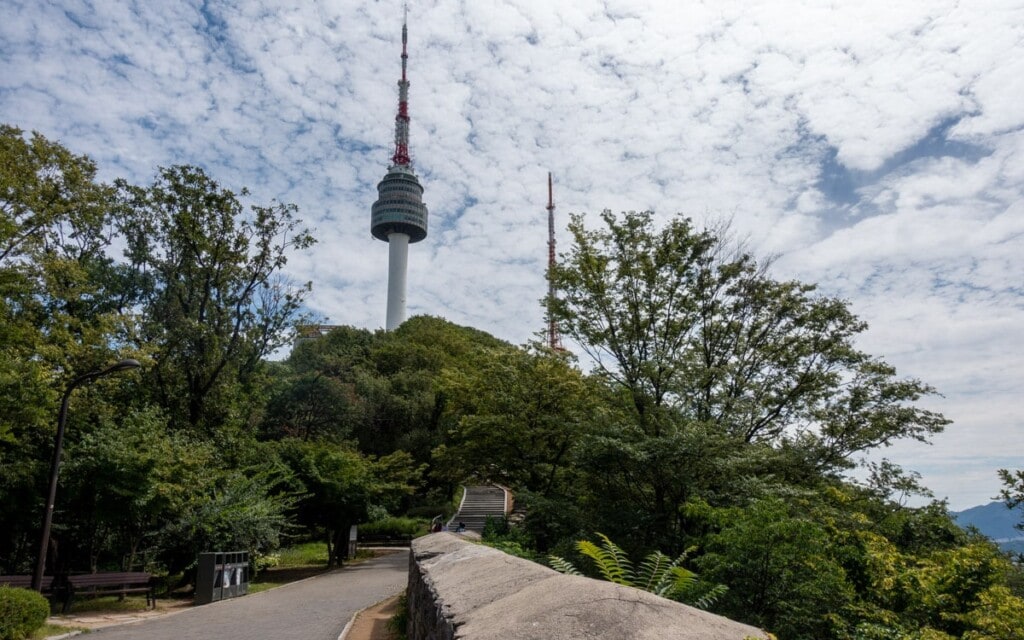
Since 1980, the N Seoul Tower has been a landmark of the skyline of downtown. Over the years, it has also been known as the Namsan Tower and Seoul Tower. Built in 1969, it tops out at 236 meters (777 feet) high with an elevation of 479 meters (1,574 feet) above sea level. In late 2005, the building went through extensive remodeling, which cost over 15 Billion Won ($13 million USD).
Namsangol Hanok Village
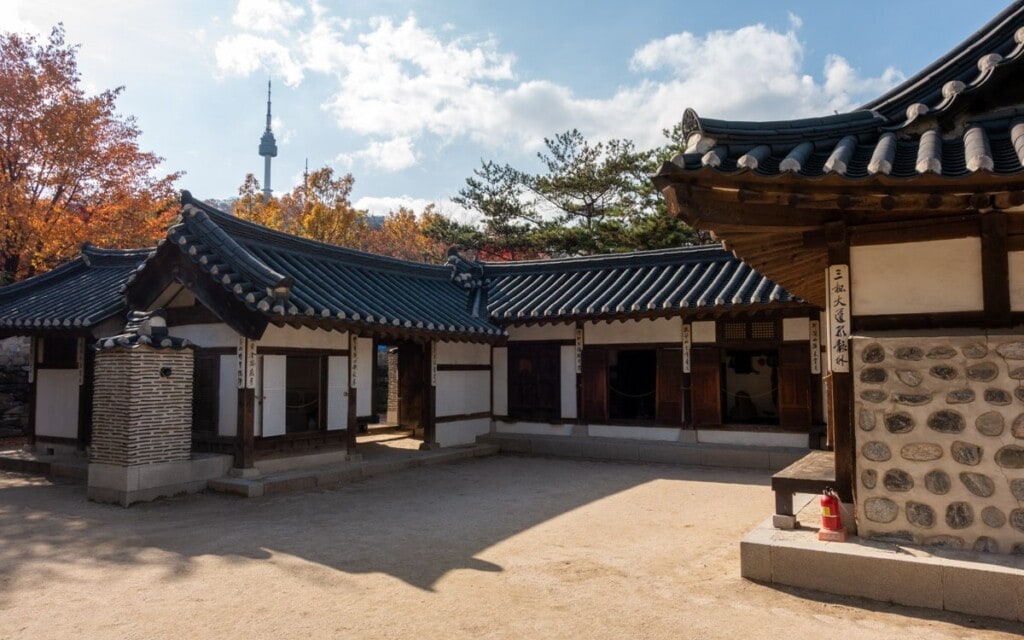
Namsangol Hanok Village is a traditional Korean village that features Korean houses and pavilions, a beautiful small pond, and an interesting time capsule. This area is one of the most beautiful and scenic locations in all of Seoul. A summer resort known as Jeonghakdong was once located here. The resort was also known as Cheonghak-dong for the blue cranes (cheonghak) that were said to have flown in the area.
Haebangchon
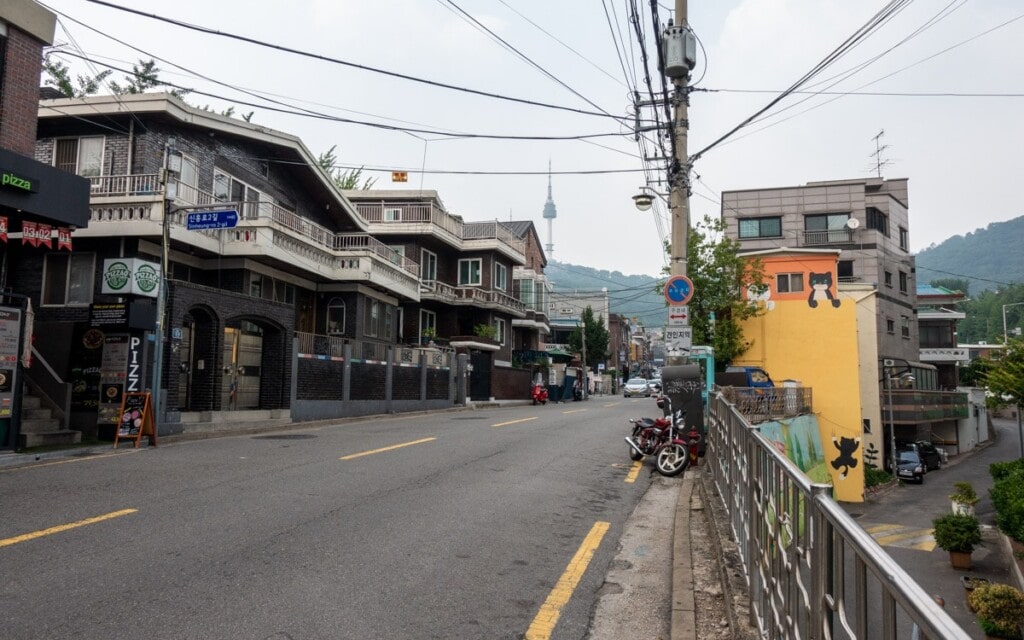
Haebangchon, also known as HBC, is a neighborhood located in the Yongsan-gu District of Seoul, Korea.
Namdaemun Market
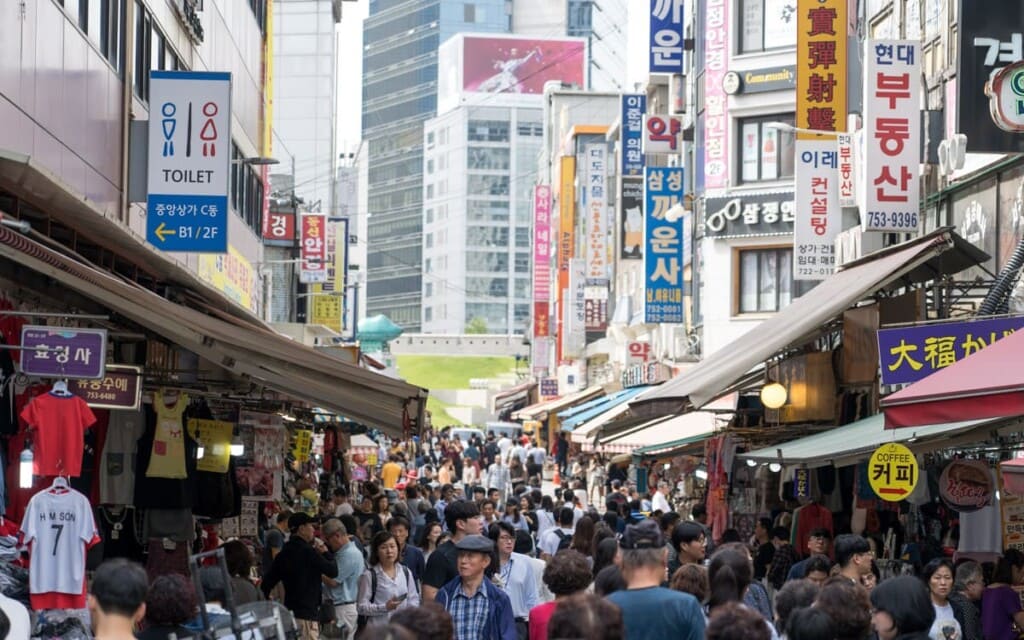
Namdaemun Market, first opened in 1964, is the largest traditional market in Korea, with over 10,000 retailers, vendors, and wholesalers. The market, spread over many blocks, is a dense maze of stalls, vendors, and restaurants. Nowhere else in Korea can you find such a large collection of interesting and traditional Korean items for sale in one place.
Myeongdong Cathedral
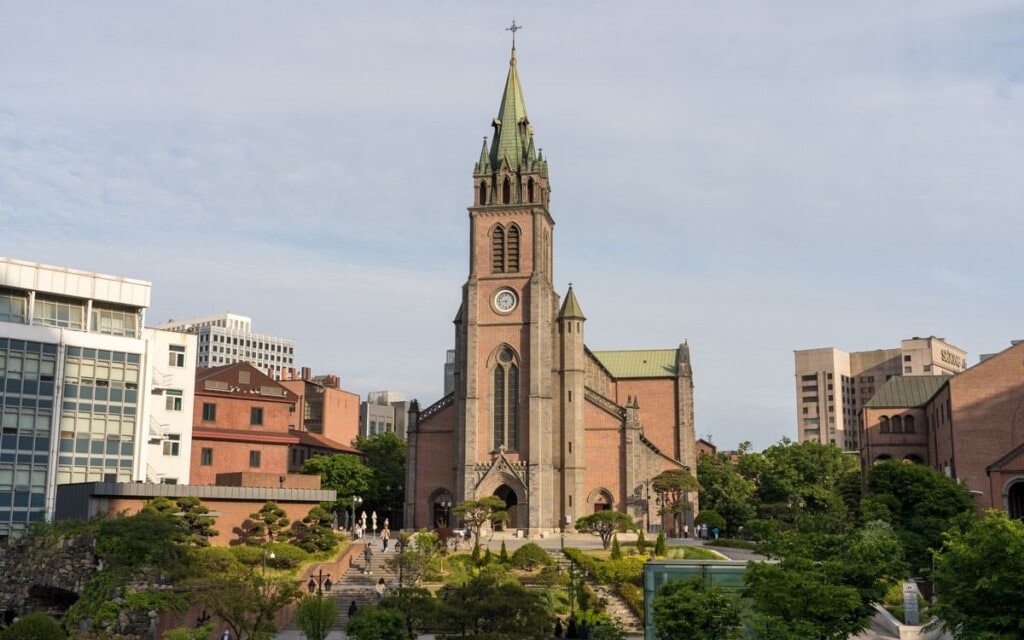
Myeongdong Cathedral was the first and most important Catholic church in Korea and is an important symbol of Christianity in the country. The church is an important icon of Korea and Myeong-dong. The official name of Myeongdong Cathedral is Cathedral Church of the Virgin Mary of the Immaculate Conception. The elegant cathedral was the first Gothic style church in Korea to be constructed of brick.
Read more about Myeongdong Cathedral
Last Updated on May 22, 2025
